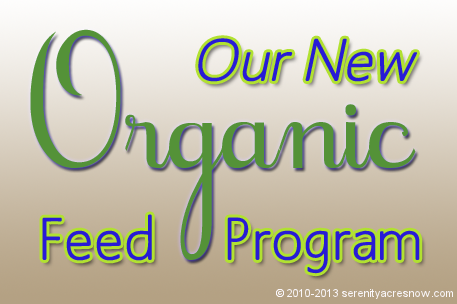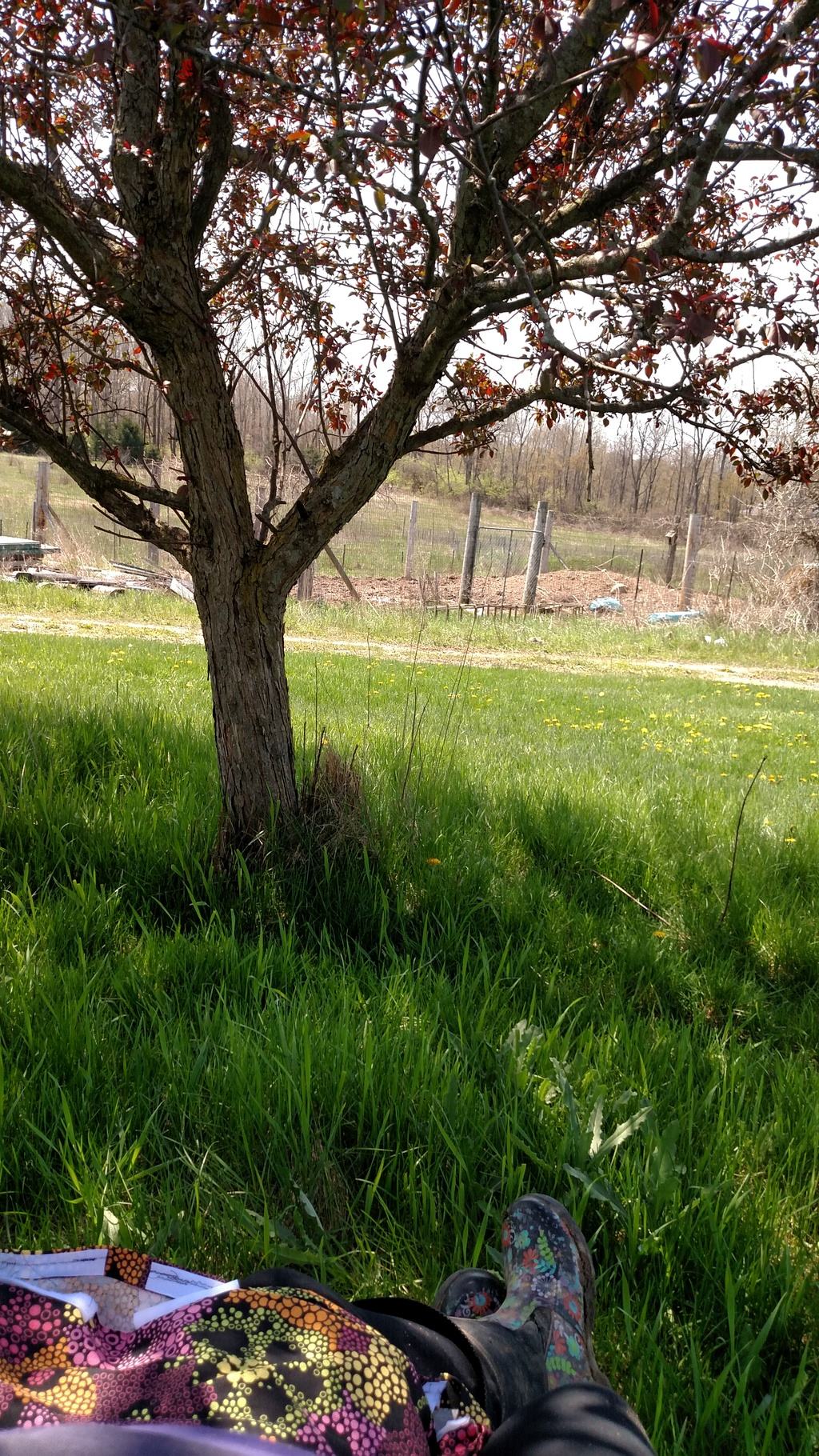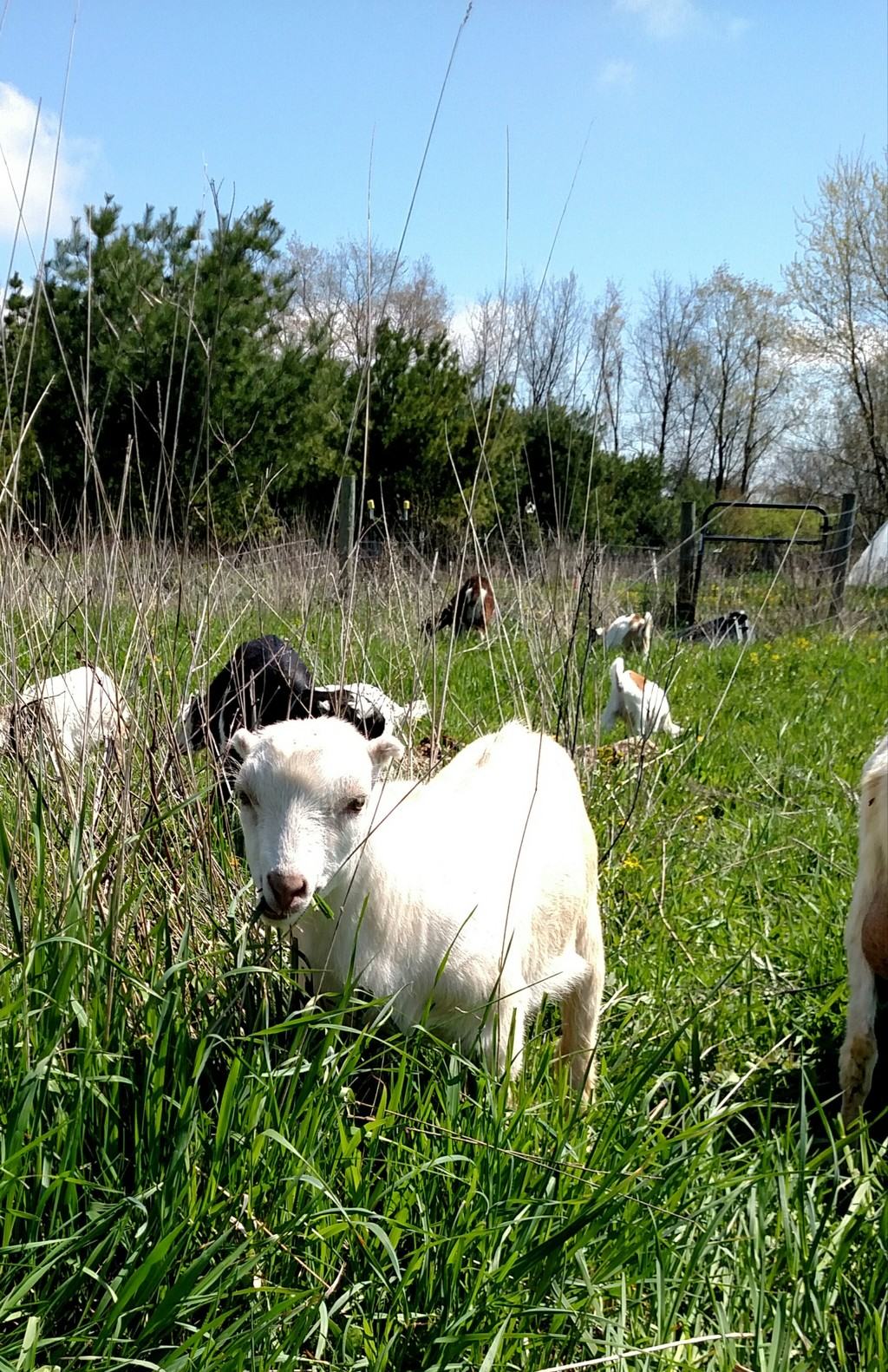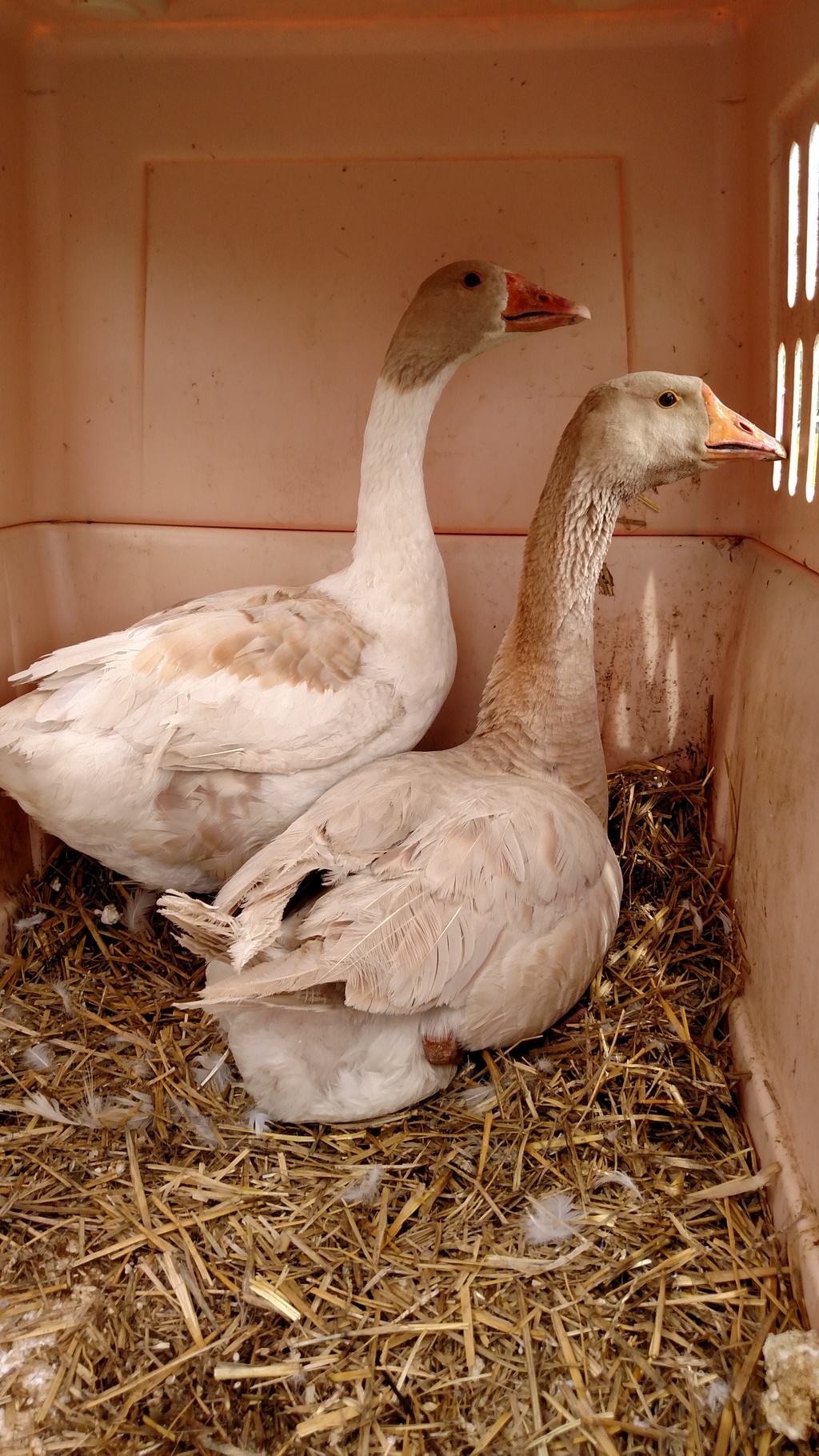 Over the years, we have debated back and forth about the merits of certified organic feed. While we are totally on-board philosophically with organics, we had several “cons” on our list working against implementing it here on our farm. Those points have included:
Over the years, we have debated back and forth about the merits of certified organic feed. While we are totally on-board philosophically with organics, we had several “cons” on our list working against implementing it here on our farm. Those points have included:
- Availability: We could not find a local source of organic livestock feed. Any producer we were able to find was several hours drive time away, or by mail order. From our standpoint, if we have to spend that much time driving – it takes away from our already-tight schedule here on the farm.
- Acquisition: Another issue was fossil fuel expenditures – if part of the goal in using organics is to move away from the petroleum products used in the production of conventional feeds (such as fertilizers, etc), then it seems like we would be negating a big part of the benefit of organics by spending so much money in fuel costs to get the organic feed here to our location. Fuel also isn’t cheap!
- Cost: All of the feeds available by mail order come with a hefty shipping price, on top of the already higher cost of the feed itself – often triple or quadruple of the cost of the locally-grown feed from our nearby elevator. Or driving four to six hours round-trip at least once a month, if not more frequently to pick it up ourselves – well, you can imagine how quickly those fuel costs add up. Simple logic should make it obvious – if we have to spend significantly more to raise foods, we must then accordingly charge more. Last year’s drought set us back financially in a very significant way. Hay has been costing us about triple of what it has in years past, once you account for both the increased costs and hay requirements, due to the lack of pasture availability for the last six months of 2012. We’ve tried to keep our prices held at bay, but that has frequently meant that George’s off-farm paycheck has subsidized the raising of these foods. That’s not fair to us, it’s not sustainable, and we didn’t want to create another unsustainable situation by switching to feed for which nobody was willing to bear their fair share of the cost via the price of products.
- Quality/Trust: To be frank, we don’t just trust something simply because it has a USDA Organic label on it. The idea of organic has been compromised over the years. What we expect when we see “organic” on the label and what actually is contained within are often two ideas that exist on opposite sides of a large chasm. As an unfortunate example, in consumer goods – many BigAg conglomerates have bought up organic producers whose products were previously trustworthy, and in too many cases, simply no longer uphold the same high standards. One of the reasons those standards have declined is that BigAg, through lobbyists and having their own cronies in place in regulatory agencies, have managed to water down the definition of “organic” over the years so that it allows them to cut costs by using many of the conventional, industrially produced ingredients that we are all trying to avoid in the first place. This includes the animal feed. And while most companies going through the trouble of getting certified organic are probably holding to a high standard, once you have a conventionally-minded conglomerate involved, which only purchases a smaller company to effectively eliminate their competition and gain a greater market share in doing so, we get skeptical of whether they will retain the caliber of quality that small company built prior to being purchased by a conglomerate that represents everything they were trying not to be. So for us, we want to be able to talk to the producer face-to-face, to ask them specific questions, to know how their philosophy falls in line with our own. Additionally, we want to know that they are aware of issues like pollen drift and that the crops they use in their feeds are managed with that knowledge in mind to avoid cross-contamination with transgenics.
There are some other minor issues, but those three are the big ones. And we really used those as metrics to determine whether or not to give organic feed a try. Recently, we’ve been revisiting the idea, because, well, as part of our philosophy, it’s something we do regularly. And it really struck home with us that it was time to revisit the idea, pronto, when we discovered last week that conventional hog feeds contain…{drumroll}…
…other hogs.
Yes. I’m serious. Gross, right?
When we saw “hog meat and fat” as one of the primary ingredients on the conventional feed label, that was when we were done. Why would we go through the effort of raising these animals in a way to result in the highest possible quality meat if we are just giving them feed that contains what is undoubtedly slaughterhouse “unwanteds” – floor leavings that cannot otherwise be used? Did you know that the outbreak of foot and mouth disease amongst the swine population in the UK back in 2001 was caused by feeding untreated pigswill – meaning, leftover foods from kitchens, cafeterias, restaurants, etc., that included uneaten pork? The practice is now banned there because of that outbreak. Here in the US, The Swine Health Protection Act of 1980 specifies that any animal products fed to swine must first be boiled in an effort to sterilize it, so that has obviously happened before those hog leavings were ground up, dried, and used in the feed formula. Just the same, it seems like a bad idea on principle, especially when you consider that the hog meat used for these feeds was undoubtedly from confinement-raised, antibiotic-laden swine, which is the exact opposite of what we are trying to accomplish here.
So our hunt for locally produced organic feed promptly commenced as soon as we decided to get the pigs.
We were fortunate enough to find a certified organic producer about an hour’s drive from us, and we picked up our first load last week. Our plan is to make the drive once a month to restock. It’s going to require some advance planning on our part, not only for the one-hour-each-way travel that will take up a part of one of our precious Saturdays each month, but also to remember to place our order with enough advance notice, because they custom grind all grains on a per-order basis. That’s actually fantastic, because it means the feeds will be fresher for our animals, with better nutrition. Feeds that are pre-ground and wait on the shelf to be purchased go rancid more quickly. So this is another advantage. The fact that it is locally produced and helps to support another farming family directly is also very appealing to us. And last but not least, the better nutritional advantages to our animals.
All of these benefits come at an increased cost, of course, because you get what you pay for, after all. We will be paying over 50% more for this organic feed than we have been for the locally-grown conventional feed we’ve been using up until now, and that will inevitably need to be reflected in some price increases on our products so that we can continue to do what we’re doing here. Believe it or not, that price increase is still much better than we would have been facing elsewhere – either a few hour drive away, or through mail order – where we were looking at triple and quadruple the price we’ve been paying. We’re still in the process of switching over, so it will take some time for us to fully convert, as we use up the remainder of some of the conventional feed over the next few days – we had just restocked from the original elevator two weekends ago and have some layer mash and goat grain to use up, but it will be gone shortly, and we’ll be able to get a good grasp on how much of the organic feed we’ll be using on a daily basis, and run our cost calculations from there. As soon as we determine how that will affect prices, we will let you know. The animals already seem happier with the new feeds they’ve sampled, and we expect that’ll show in the foods they produce for us. We hope that our customers will appreciate and support this move to a higher quality, more sustainable, non-GMO based feed program.





Leave a Reply